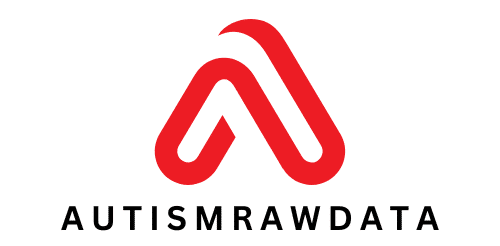When it comes to dealing with chronic pain, the first line of treatment that many healthcare providers might have recommended has been opioids. However, the reality is that these medications, while effective in some cases, come with a host of potential side effects and risks, including addiction and overdose. Additionally, some people find that they simply don’t provide the relief they need. In light of these challenges, medical professionals have been exploring new, non-opioid approaches to pain management. Whether you’re a patient, a healthcare provider, or simply someone who wants to stay informed about health trends, it’s essential to understand these evolving strategies and treatments.
Physical Therapy – A Non-pharmacologic Approach
Physical therapy has long been a cornerstone of pain management, but in recent years, this modality has taken on increased importance as an alternative to opioid medications. By focusing on physical movement and therapeutic exercises, physical therapy can help to reduce chronic pain in many patients.
A lire en complément : What Are the New Trends in Customizable Wearable Medical Devices?
Physical therapists use a variety of techniques to help manage pain. This may include manual therapies, such as massage and joint manipulation, as well as therapeutic exercises that help to strengthen the body and improve flexibility. These exercises are often tailored to the individual patient’s needs and abilities, ensuring that they are safe and effective.
Another crucial aspect of physical therapy is patient education. Physical therapists will work with patients to teach them about their condition, how to manage their symptoms, and how to avoid exacerbating their pain. This type of education can empower patients to take a more active role in managing their pain, reducing their dependence on medications.
A découvrir également : How to Utilize Vertical Farming to Increase Urban Food Production?
Mind-Body Therapies – Harnessing the Power of the Mind
Mind-body therapies represent another innovative approach to pain management that does not involve opioids. These therapies recognize the intimate connection between the mind and body and seek to leverage this relationship to help patients manage their pain.
One common form of mind-body therapy is mindfulness-based stress reduction (MBSR). This technique involves training the mind to focus on the present moment, rather than dwelling on past pain or worrying about future pain. According to a PubMed review, MBSR has been shown to reduce pain intensity and improve quality of life in people with chronic pain.
Cognitive-behavioral therapy (CBT) is another technique that’s showing promise in chronic pain management. A PMC study shows that CBT can help patients reframe their thoughts and attitudes about pain, thereby reducing its impact on their lives.
Nerve Blocks and Neuromodulation – Targeted Pain Relief
Nerve blocks and neuromodulation are medical interventions that can help manage chronic pain without the use of opioids. These techniques involve manipulating or modifying the nervous system’s activity to reduce pain signals.
A nerve block involves injecting medication near a specific nerve or group of nerves to reduce pain signals from that area. The medication used in nerve blocks is typically a local anesthetic, not an opioid. According to a clinical review on PubMed, nerve blocks can provide substantial pain relief for people with certain types of chronic pain, such as neuropathic pain and complex regional pain syndrome.
Neuromodulation, on the other hand, involves using electrical or magnetic fields to modify nerve activity. This can be done with devices implanted in the body, such as spinal cord stimulators or peripheral nerve stimulators, or with non-invasive techniques like transcranial magnetic stimulation (TMS).
Non-Opioid Medications – Exploring Other Pharmacologic Options
While opioids have traditionally been the go-to medications for chronic pain, there are many other drugs available that can help manage pain without the risks associated with opioids. This includes over-the-counter pain relievers like acetaminophen and non-steroidal anti-inflammatory drugs (NSAIDs), as well as prescription medications like certain antidepressants and anticonvulsants, which can help manage neuropathic pain.
It’s also worth noting that medical professionals are constantly researching and developing new medications for pain management. For example, a recent PMC review discussed the potential of certain cannabinoids – compounds found in the cannabis plant – as non-opioid pain relievers.
Lifestyle Modifications – The Role of Diet and Exercise
Another crucial aspect of chronic pain management that’s often overlooked is the role of diet and exercise. While these lifestyle modifications may not provide immediate relief like a pill, they can play a significant role in managing pain over the long term.
Regular physical activity can help to reduce chronic pain by strengthening the body, improving flexibility, and boosting mood. A healthy diet can also play a role in pain management. For instance, certain foods are known to have anti-inflammatory properties, which can help to reduce pain caused by inflammation.
In conclusion, while opioids have traditionally been a mainstay of chronic pain management, a growing body of evidence and clinical practice supports the effectiveness of non-opioid strategies. By exploring these alternatives, healthcare providers can help their patients manage their pain more safely and effectively. However, it’s also essential for patients to be active participants in this process, discussing their concerns and preferences with their healthcare provider to find the best approach for them.
Acupuncture – An Ancient Technique with Modern Relevance
Acupuncture is an ancient Chinese medicinal practice that has gained significant recognition in the United States and worldwide as a viable method for pain management. The technique involves inserting fine needles into specific points on the body to balance energy flow.
In the context of chronic pain, acupuncture works by stimulating the body’s own healing mechanisms. The needles’ placement is believed to trigger the release of endorphins, chemicals that naturally relieve pain, promote relaxation, and enhance the body’s general sense of well-being.
According to a PMC study, there is substantial evidence to support acupuncture’s efficacy in managing various types of chronic pain, including low back pain, osteoarthritis, and headache. Importantly, in contrast to opioids, acupuncture carries a low risk of adverse side effects when performed by a trained professional, making it an attractive non-opioid approach to pain relief.
Complementary and Integrative Health Approaches
Complementary and integrative health (CIH) approaches, including dietary supplements, yoga, tai chi, and qi gong, can also serve as fruitful non-opioid interventions in the management of chronic pain. These approaches focus on improving overall health, well-being, and quality of life rather than merely addressing the pain symptoms.
For instance, yoga and tai chi can offer both physical and mental benefits, including improved strength and flexibility, reduced stress levels, and enhanced mindfulness. Both practices can foster a sense of control over one’s pain and promote a more positive pain-coping strategy.
On the other hand, dietary supplements, such as omega-3 fatty acids, turmeric, and ginger, have been recognized for their anti-inflammatory properties, which can help manage pain conditions driven by inflammation. Of course, it’s crucial always to consult with a health care provider before starting any new supplement regimen.
In Conclusion – A Holistic Future for Chronic Pain Management
In light of the rising tide of opioid addiction and overdose in the United States and globally, the pursuit of non-opioid approaches to chronic pain management has never been more urgent. Whether these strategies involve physical therapy, mind-body therapies, nerve blocks and neuromodulation, non-opioid medications, lifestyle modifications, acupuncture, or complementary and integrative health approaches, the focus is on providing safer, more effective, and more sustainable pain relief.
While these non-opioid strategies may not entirely replace opioids, they offer promising alternatives that can complement traditional pain management approaches. The ultimate goal is to provide individualized, patient-centered care that empowers individuals with chronic pain to live full, active, and meaningful lives.
As the landscape of chronic pain management continues to evolve, patients, healthcare providers, and society at large must remain open to these novel approaches. The path to effective and safe chronic pain management is a shared journey, one that calls for continued research, open dialogue, and, importantly, empathy and understanding. After all, in the fight against chronic pain, every step forward matters.






